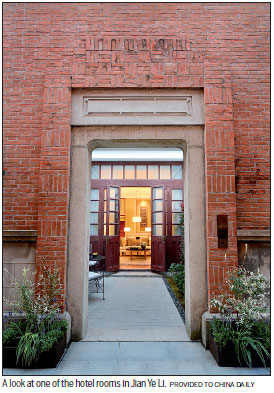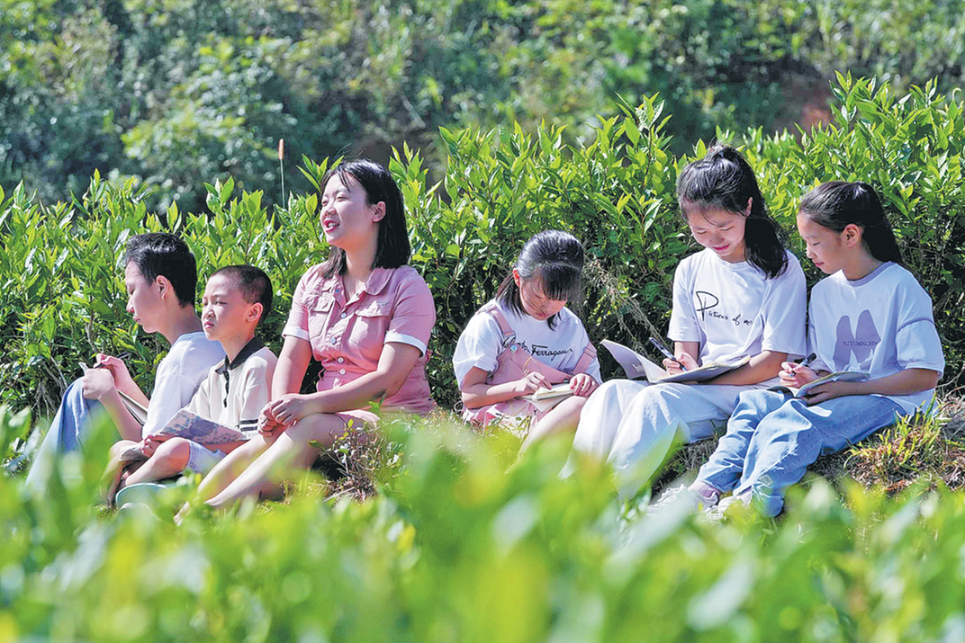Shikumen compound gets controversial facelift

The transformation of Shanghai's largest shikumen compound, Jian Ye Li, into a luxury hotel has sparked controversy over the correct way to preserve historically important architectures.
Apart from the hotel which falls under the American hospitality brand Capella, the renovated compound also features restaurants, shops and private mansions.
Occupying 17,000 square meters, the compound dates back to 1930 and used to have 260 homes. Before the developers commenced renovations in 2008, there were upwards of 3,000 people residing in the compound, which had since 1994 been designated as a municipal-level historically important building.
Though the facades of the buildings have been kept intact, the developers tore down the interiors to repurpose the space, drawing flax from conservation experts.

"The preservation of the shikumen, or any form of residential architectures, is not only about keeping the architecture intact. It also involves preserving the original lifestyle within," said Zhang Xuemin, director of Shanghai Shikumen Culture Research Center.
Earlier this year, the research center and several political advisors had called for shikumen houses to be included in UNESCO's World Heritage List alongside other Chinese cultural sites such as the Longmen Grottoes, Mount Wutai and the legendary Temple of Heaven in Beijing.
A distinctive residential architecture that used to characterize Shanghai's streets, like the Haussmannian buildings in Paris or the white-painted Cycladic houses by the Aegean Sea, shikumens - which literally means "stone-framed gatehouses" - are believed to have originated in Shanghai in the late 19th century.
A treaty port back during those times, Shanghai witnessed a big influx of immigrants who were fleeing wars and political turmoil in neighboring provinces. To accommodate the surge in population, the shikumens, a new breed of residences, was created by combining Western-style terrace houses with Chinese elements.
At its peak, two-thirds of the city's population dwelled in the unique architecture, which amounted to more than 9,000 complexes, according to official municipal records. Today, there are less than 180 shikumens left in the city and even fewer have been carefully preserved, based on research by the cultural and historical data committee of Shanghai's political advisory body.
Zhu Jinsong, general manager of Hengfu Investment and Development company, one of the major developers of Jian Ye Li compound, said: "The priority of our renovation is to restore the former glory of these architectures."
The hotel, which comprises 55 houses, is marketed as the first and only one in Shanghai that allows guests to spend a night in a shikumen villa. It is scheduled to open in March next year.
A fine dining restaurant by highly acclaimed French chef Pierre Gagnaire, who was in 2015 crowned as the best chef in the world by French magazine Le Chef, will also be situated in the premises.
xujunqian@chinadaily.com.cn

(China Daily USA 12/09/2016 page7)
Today's Top News
- Japan's PM seen as playing to right wing
- Mainland increases entry points for Taiwan compatriots
- China notifies Japan of import ban on aquatic products
- Envoy: Japan not qualified to bid for UN seat
- Deforestation is climate action's blind spot
- Japan unqualified for UN Security Council: Chinese envoy






























